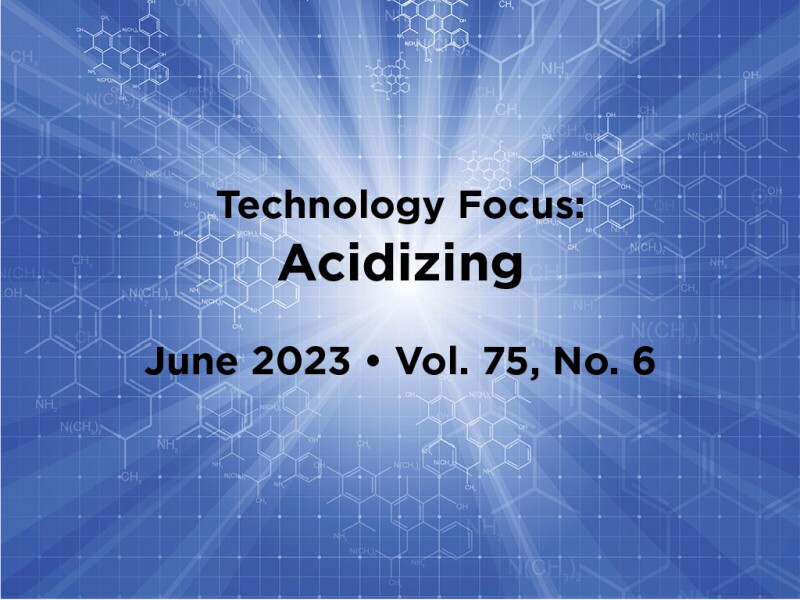The first acid job dates to 1895. Challenges remain, however, when it comes to lithology, coverage, penetration, and management of reaction products. These themes remain a focus for stimulation engineers.
In paper SPE 204879, for example, a novel in-situ foam-generation system is introduced that provides effective diversion and leaves no residue. Field applications suggest significantly better performance compared with other diversion systems. In paper SPE 203985, the authors present a 3D acid-fracturing model to calculate fracture geometry induced through multistage alternating injection of pad and acid fluids. Alternating acid with high-viscosity polymer pad promotes nonuniform acid etching and viscous fingering, which leads to longer and narrower channels. Concurrently, investigators are studying methods to achieve effective near-wellbore and far-field bridging using a combination of solids and fiber-laden acid. For those wishing to delve deeper into this subject, paper SPE 206255 makes interesting reading.
Completions can play a role in improving acid treatments. Limited entry, as presented in paper SPE 211394, and the so-called “segmented and selective” completions are at the forefront. Paper IPTC 23003 introduces the concept of sweet spots, which are then completed selectively with packers and sliding sleeves. Paper SPE 213406 describes a relatively complex architecture for a trilateral TAML Level 2 well with openhole packers and ball‑activated sleeves. Thus, it can be said that most enabling technology is out there.
Lastly, engineers have begun to leverage benefits that big data and artificial intelligence potentially offer. Predicting an outcome of an acid job remains hit-and-miss at best—a gap engineers must bridge. In paper SPE 208172, the authors present a predictive model to estimate the efficiency of acid-fracturing treatments in naturally fractured reservoirs using an artificial neural network. They report a predictability error of less than 10%. This may be what we are looking for.
I hope you find the selections enlightening.
This Month’s Technical Papers
Simulator Aids Design, Analysis of Acidizing Jobs With Fluoroboric Acid
Study Investigates Ineffectiveness of Acid Fracturing for Tight Reservoir Rock
Multistage Acid Stimulation Uses Straddle Packer, Real-Time Telemetry
Recommended Additional Reading
SPE 207514 Subsea Multiwell High-Flow-Rate Riserless Acid Stimulation Campaign With Two-Vessel Approach: A Comparative Case Study by Irma Kusumawati, ConocoPhillips, et al.
SPE 205599 A New Method of Carbonate Matrix Stimulation Modeling and Optimization Using Field Experimental Data for Acid Efficiency Calibration and Case Studies in Kazakhstan by Ruslan Kalabayev, SLB, et al.
SPE 209673 Reducing Carbon Footprint of Matrix Acidizing in Carbonate Formations: How Much Acid Do We Really Need To Pump? by Mahmoud T. Ali, Baker Hughes
Imran Abbasy, SPE, has more than 35 years of global industry experience with leading exploration and production (E&P) companies, having held technical and leadership roles in production technology, drilling, completion engineering, and operations. He has worked in the North Sea, Middle East, Australia, Indonesia, Nigeria, and Papua New Guinea, supporting completion design, artificial lift, well integrity, and production optimization. In September 2022, Abbasy was appointed managing director and CEO of Pakistan Petroleum Limited (PPL), a listed public sector E&P company and a pioneer frontline player of Pakistan’s energy industry. He also heads PPL’s associated company overseeing operations in Offshore Block 5 in the UAE. Abbasy has authored several SPE papers and participated in SPE Applied Technology Workshops. He holds a bachelor’s degree in mechanical engineering and a master’s degree in aerospace engineering from George Washington University.

